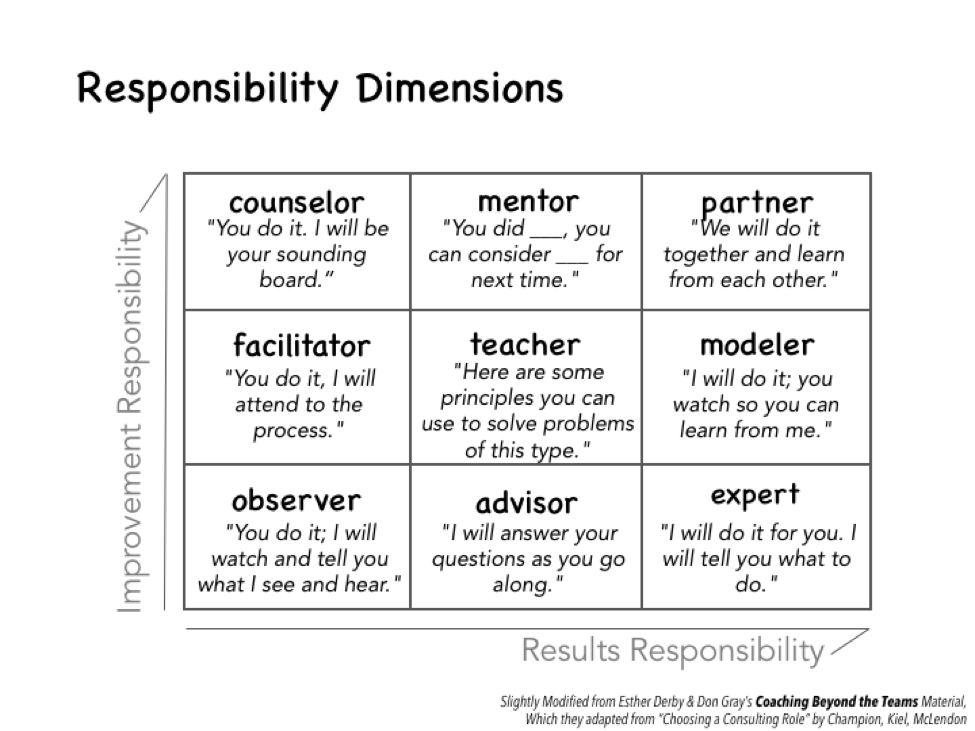Being a coach is unlike the other roles I’ve had in my career. As a developer, at the end of the day, I could look at a piece of working code that I created. As a project manager, I always had my trusty project plan to marvel at! As a Federal Branch Chief, I got direct feedback from the line of business program managers on how well my branch created products for them, the good and the bad – especially the bad. But, as a coach, while I often feel great about how the day went, I sometimes question what I accomplished and, honestly, what my role is on the team.
At Agile Coach Camp US 2014, Don Gray provided an exercise and then anchored the discussion around a model he and Esther Derby developed based on some prior work by Douglas Champion, David Kiel, and Jean McLendon. The model resonated with me. And now, after a minor tweak, I have begun using it in my own presentations, including those I have recently given at the Agile Leadership Network and at the DC Scrum User Group. (If you are interested in seeing the very slight differences, here’s a flyer from Esther’s site).
This model has two dimensions based on responsibilities: responsibility to help the organization or team improve, and responsibility to help the organization or team achieve results. Establishing these dimensions as a two-dimensional space, I now see various roles I need to assume based on where I need to prove assistance. Here’s what this looks like:

In addition to presenting this at meet-ups and encouraging others to adopt the model, the coaches at Excella have fully bought into this model as well. We use it as a self-assessment tool to discover where we want or need to improve. We also use it as a way of understanding how best to help our clients. For example, what role does the ScrumMaster need me to assume to give him the best feedback on performance? Does the team need me to step in and help them learn a new principle or practice? Does the CIO need me to help him shape his portfolio implementation?
Many of us subconsciously bounce from one role to another seamlessly. Others consciously determine what role to play based on the scenario. How our coaches differ in their approach is often a topic of conversation at our monthly Coaching Circle meetings. But, in the end, the important thing is that we know the different roles we have to fill in order to drive the people/teams/organizations that we work with to success.